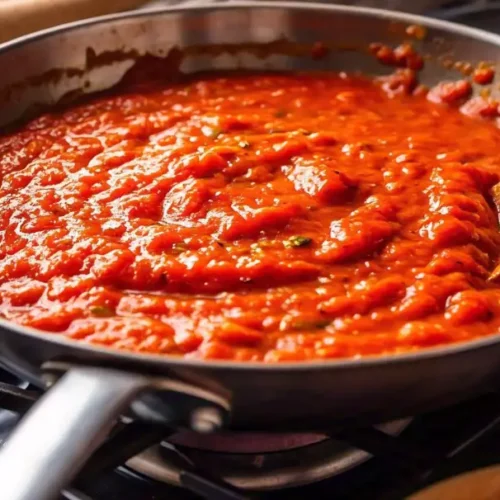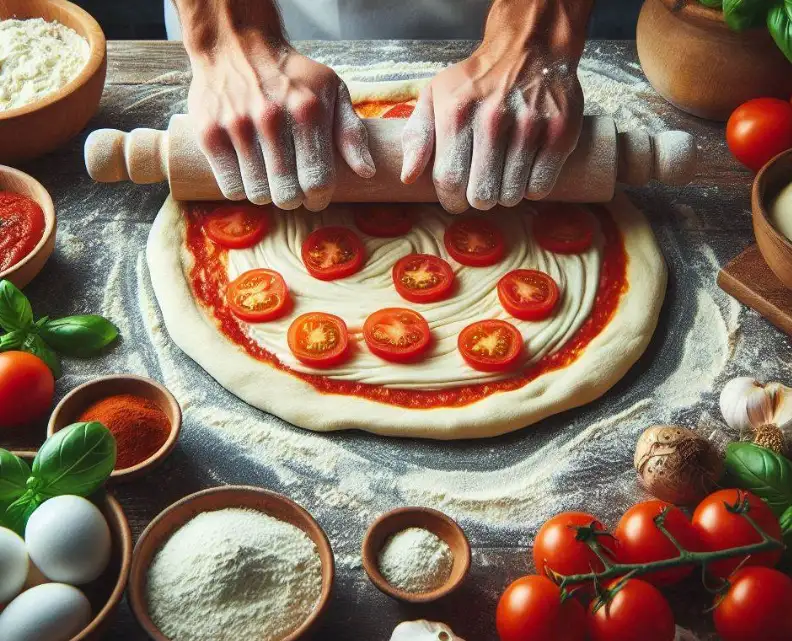If you’re a pizza enthusiast, you’ve likely heard of Marc Vetri, renowned chef and author of Mastering Pizza. This guide dives deep into his Naples-style dough recipe, a favorite among home bakers seeking to replicate the magic of authentic pizzeria-style pizza.
Why Marc Vetri’s Recipe Stands Out
Marc Vetri’s Mastering Pizza isn’t just a cookbook; it’s a treasure trove of pizza-making techniques. Organized by styles like Neapolitan, Roman, al Taglio, and focaccia, the book emphasizes hydration levels, flour types, and mixing methods. For beginners, the Naples-style dough at 70% hydration is an excellent starting point. It’s specifically tailored for home ovens and yields a soft, pliable dough perfect for crafting delicious pizzas.

Naples-Style Pizza Dough Recipe
Equipment
- Stand mixer with a dough hook
- Bench knife
- Large, wide containers for proofing
- Kitchen scale for precise measurements
- Baking steel, pizza stone, or sheet pan
Ingredients
- For one 10-12 inch pizza:
- 116 g 1/2 cup filtered water, around 53°F
- Scant pinch of instant dry yeast
- 166 g 1 1/3 cups bread flour, plus extra for dusting
- 4 g 3/4 teaspoon kosher salt
Instructions
Mix the Dough
- In a stand mixer bowl, combine water, yeast, and flour. Mix on speed 2 for about 2 minutes until combined.
- Add salt and mix for another 30 seconds to disperse.
- Knead the dough for 12-15 minutes. The dough will be soft and slightly sticky. If necessary, add up to 1/4 cup of flour during this process.
First Rise
- Cover the bowl with a towel and let the dough rest for 2 hours at room temperature.
Form the Dough Ball
- Lightly flour your hands and bench knife. Scrape the dough onto a clean surface.
- Gently drag and fold the dough to form a smooth, taut ball. Place it in a wide container with a tight-fitting lid.
Second Rise
- Let the dough rise at room temperature for 6-12 hours. This extended proofing develops flavor and texture.
Shaping and Baking Your Pizza
- Preheat Your Oven
- Place a pizza stone, baking steel, or sheet pan on the second-highest rack. Preheat the oven to 500°F for at least 30 minutes.
- Shape the Dough
- Sprinkle a work surface with bread flour. Gently stretch the dough into a circular shape, leaving a thicker rim for the crust.
- Use a floured pizza peel to transfer the dough to your prepared baking surface.
- Add Toppings
- Spread 1/3 cup of pizza sauce, then add torn fresh mozzarella, halved cherry tomatoes, and fresh basil leaves. Drizzle with olive oil and season with sea salt and pepper.
- Bake
- Bake for 3 minutes, then add mozzarella. Bake an additional 3-4 minutes until the crust is puffed and slightly blistered.

Pizza Sauce Recipe
Ingredients
- 1 28 oz can whole peeled tomatoes
- 3 tbsp extra virgin olive oil
- 1/4 cup fresh basil leaves
- 1 tsp kosher salt
Instructions
- Blend all ingredients until slightly chunky. Adjust seasoning to taste.
- Store any extra sauce in the refrigerator or freezer.
Pro Tips for Success
- Hydration Matters:
Adjust hydration levels based on your oven and baking equipment. Higher hydration requires skill but delivers airy, blistered crusts. - Temperature Control:
Use a kitchen thermometer for precise water temperatures, which influence yeast activity and dough consistency. - Practice Makes Perfect:
Learning the “feel” of your dough is key. Experiment with hydration and proofing times to find your perfect balance.
With Marc Vetri’s method, making pizzeria-quality pizza at home is achievable and immensely rewarding. Whether you’re a novice or a seasoned baker, this recipe offers a chance to elevate your pizza game. Happy baking!
FAQ: Frequently Asked Questions
1. What is the ideal temperature for proofing pizza dough?
- Room temperature (about 70-75°F) is ideal for proofing pizza dough to ensure even fermentation and optimal texture.
2. Can I use active dry yeast instead of instant yeast?
- Yes, but you’ll need to activate it first by dissolving it in warm water (about 105°F) for 5-10 minutes before mixing it into the dough.
3. Why is my pizza dough too sticky?
- Sticky dough may result from excess hydration or insufficient kneading. Dust your hands and surface with a little flour and knead more if needed.
4. How can I tell if my dough is overproofed?
- Overproofed dough may collapse or have a wet, overly sticky texture. To avoid this, monitor your proofing times closely.
5. What’s the best way to store leftover dough?
- Wrap the dough tightly in plastic wrap and store it in the refrigerator for up to 3 days. Let it come to room temperature before shaping.
6. Do I need a pizza stone or baking steel?
- While not essential, these tools help achieve a crisp, evenly cooked crust by retaining and distributing heat effectively.

